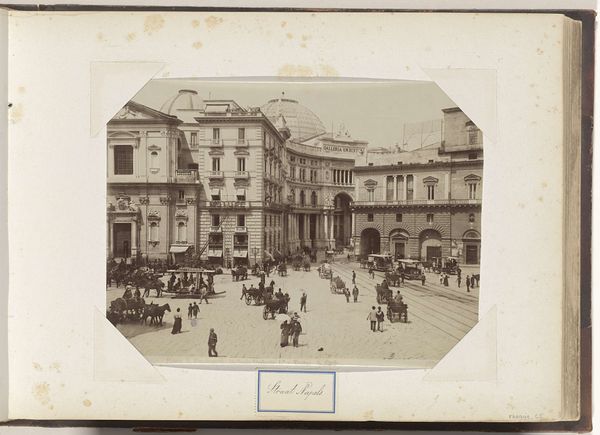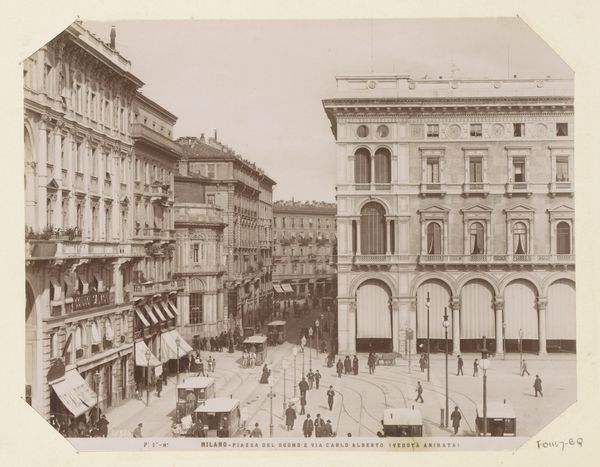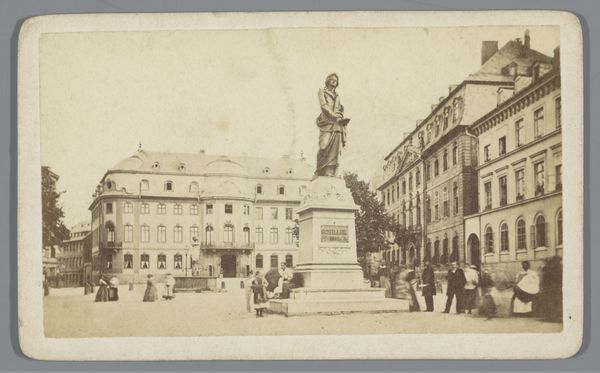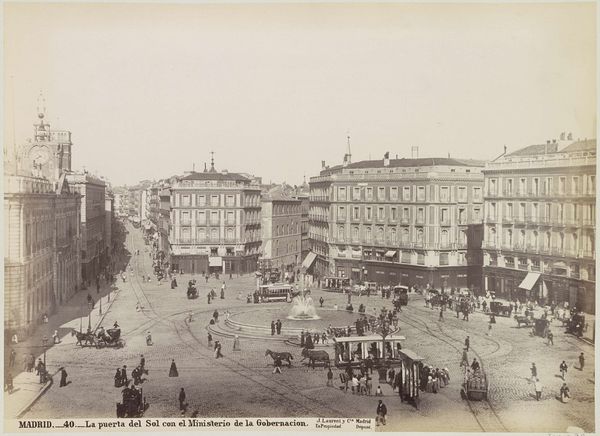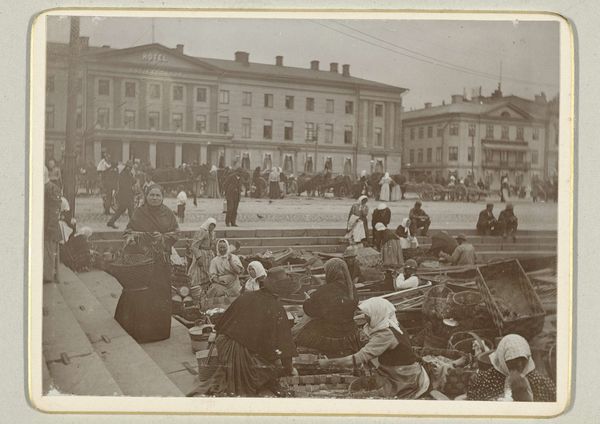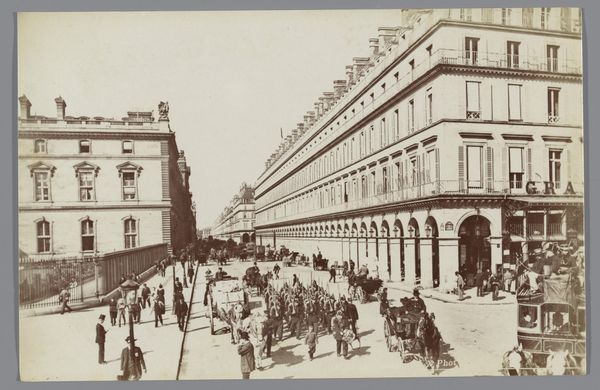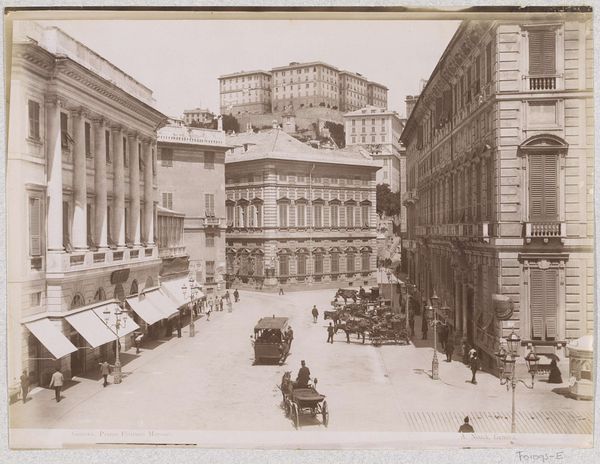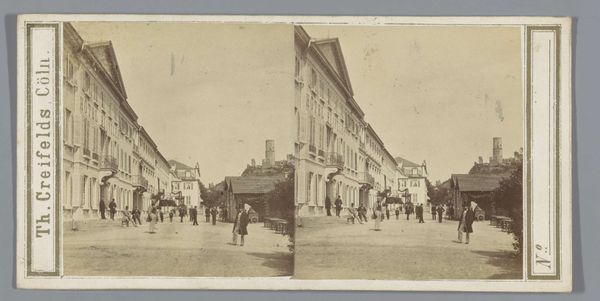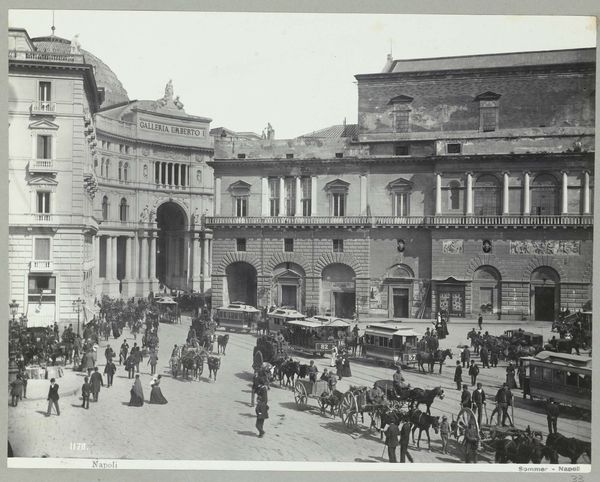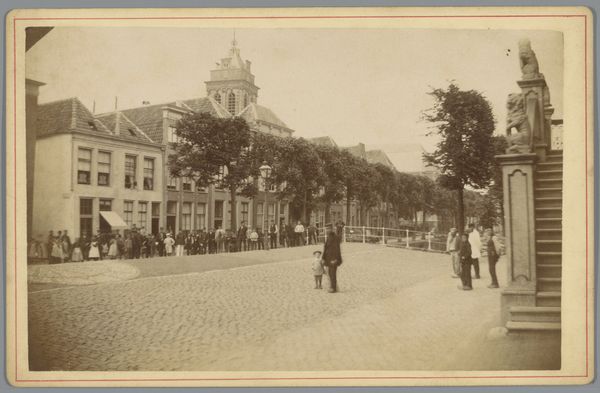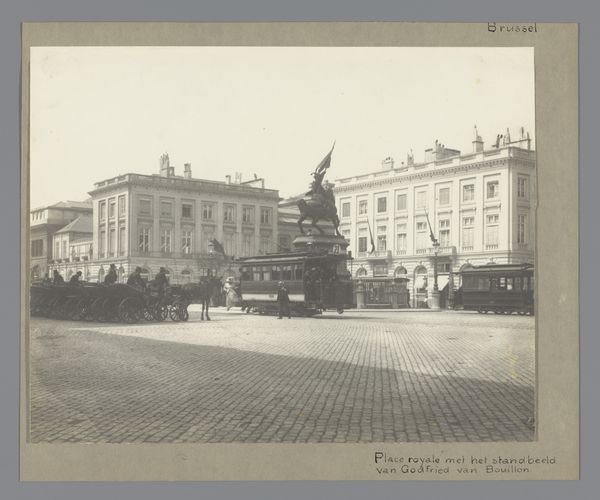
Gezicht op het Piazza di Spagna in Rome, in de verte de Zuil van de Onbevlekte Ontvangenis en de Spaanse Trappen 1860 - 1900
0:00
0:00
andersonfirma
Rijksmuseum
Dimensions: height 198 mm, width 260 mm, height 256 mm, width 380 mm
Copyright: Rijks Museum: Open Domain
Curator: This gelatin-silver print, taken by Anderson's studio sometime between 1860 and 1900, offers us a view of the Piazza di Spagna in Rome. In the distance, we can see the Column of the Immaculate Conception and the Spanish Steps. Editor: My first impression is one of stillness despite the bustle of a city square. The muted sepia tones give the whole scene a sense of suspended animation. There's an interesting dichotomy between the grandeur of the architecture and the rather ordinary activities in the foreground. Curator: Yes, that stillness resonates, doesn’t it? It speaks to photography’s ability to capture a specific moment and to also imbue it with a sense of timelessness. Consider the placement of the Column, for instance; erected only a few years before this photo was taken, it was placed to commemorate the dogma of the Immaculate Conception, thus injecting a political, cultural, and religious message in this piece. Editor: I agree, it's a fascinating tension. And note how the perspective, with the converging lines of the buildings, leads the eye directly to that column, placing it at the heart of the composition. The rigid lines and repeated square windows almost function as a formal echo. The photographer clearly composed the shot for an objective and geometrically compelling view. Curator: And I’d argue this wasn't a straightforward 'snapshot' mentality. Think about the Roman obsession with order and Neoclassical architecture—everything is symbolic. Those empty expanses also symbolize a specific relationship to urban space; compare it to more recent images, and you can sense the change in the collective attitude towards public space. Editor: That’s insightful. Thinking about it formally, the high contrast further flattens the space, making the scene read almost as a constructed stage. What we read is a blend of observation and intention in both spatial dimensions, but the muted color is a striking tonal element of the image. Curator: Absolutely. Photography from this era isn't just documentation. It's also a testament to our ever-changing dialogue with the world, the places we choose to memorialize and the weight we assign them. Editor: Precisely. A frozen moment, indeed, but also an enduring, almost timeless examination of urban existence as seen through a very calculated formal lens.
Comments
No comments
Be the first to comment and join the conversation on the ultimate creative platform.
